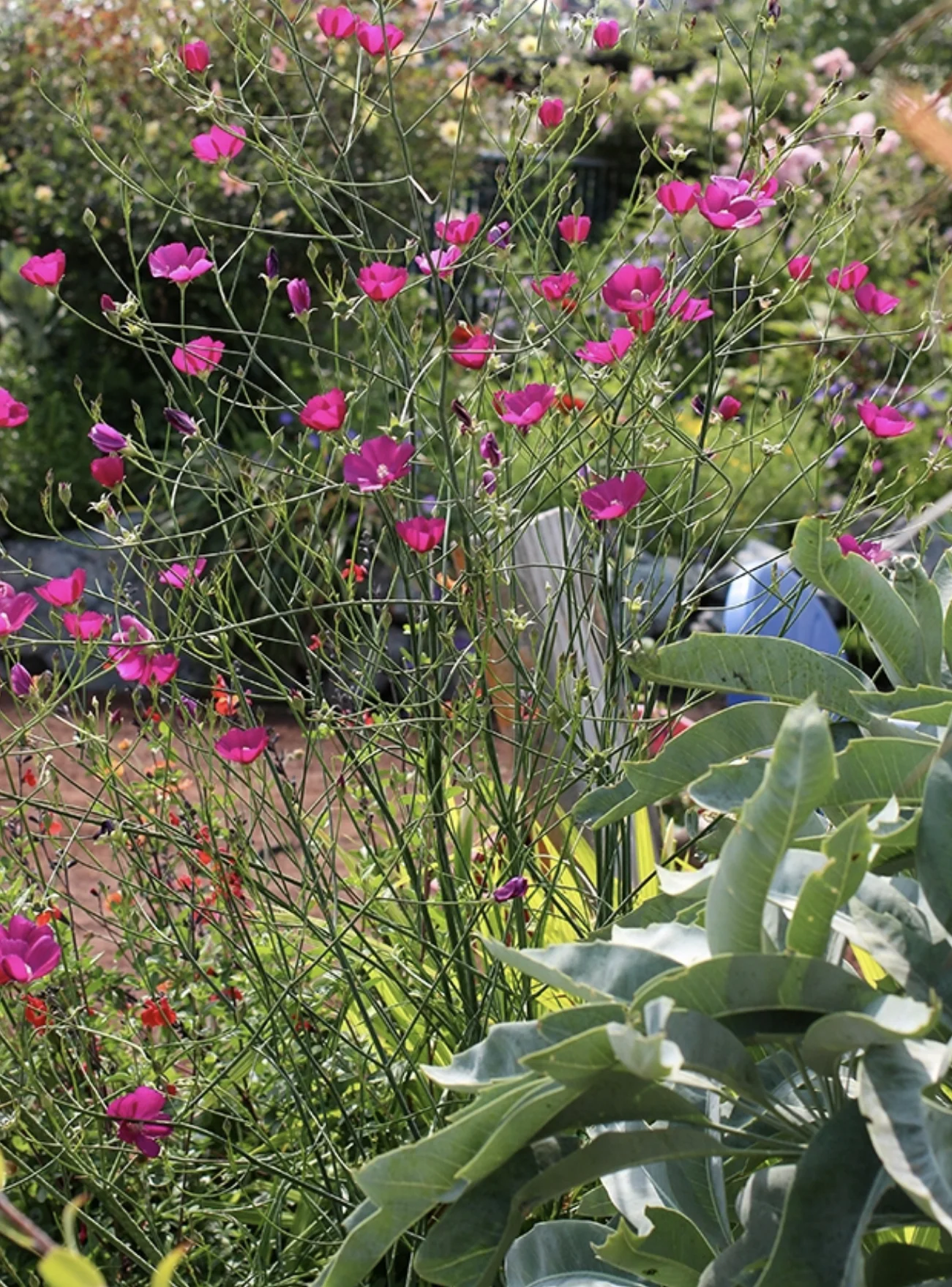Fringed Poppy Mallow
Fringed Poppy Mallow
FRINGED POPPY MALLOW SEEDS
Callirhoe digitata
Related to the prostrate and ubiqutous but no less fabulous Callirhoe involucrata, Fringed Poppy Mallow is an upright drought-tolerant perennial native to the prairies of the American Midwest. Its branching thread-like stems can grow to 4' and are topped with striking blooms of bright magenta. These flowers are especially attractive to butterflies.
This rarely-grown species will find a place in almost any garden. Callirhoe digitata stems are wiry and inconspicuous, stealthily snaking through other garden occupants. Prairie habitats, insectary borders, and cottage gardens are obvious choices, but you might also consider planting this species on the edge of the vegetable garden, amongst the sunflowers and currant tomatoes! It is extraordinarily beautiful in combination with Linum lewisii and Emilia javanica on a hellstrip, and enlivens an otherwise boring row of wild fennel grown for pollen and seeds.
Germinates best with stratification. Another method to consider: pour hot (180°F) water over seeds and soak for 24 hours. Rub soaked seeds to remove hull before sowing seeds 1/8" to 1/4" deep in moist soil, pressing to keep seed snug. Kept warm (70°F) and moist in bright light some seeds should germinate in a week or two. Prick out seedlings to grow in individual deep 3" pots. If few seeds germinate within two to three weeks, pop the pot into the refrigerator for 4-6 weeks, remoistening soil as necessary, and try again at 70°F.
In our experience the best (though not the quickest) results are achieved by sowing untreated seeds into a pot of moist soil and placing in a sheltered place outdoors in late autumn to midwinter to germinate in spring. Just be sure to keep soil moist and out of direct light and check frequently for germination, which usually occurs after at least a few freeze and thaw cycles in late winter or early spring. Seedlings should be potted up into individual deep 3" containers to grow on in a warm place in bright light. Transplant outdoors after the last frost.
Sadly all species of Callirhoe are susceptible to damage from slugs. They are slug candy. It is imperative that seedlings are protected and that plants are watered only infrequently once established. Callirhoe cannot thrive in wet places. It prefers dry soil and no coddling.
Packet contains at least 30 seeds.
